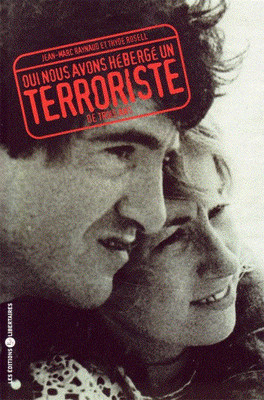Ferrua, Pietro
The Mystery of Oberwald (Il Mistero di Oberwald)
A film by Michelangelo Antonioni
Communication. FilmsLUCHENI, Luigi (Paris, 1873/04/22 - 1910/10/19). Meurtrier de l’impératrice Élisabeth d’AutricheFERRUA, Pietro (Piero) Michele Stefano (1930 - ....)Communication. Movies Online
Italy, 1980.
Color, 123 mins., 35 mm. Screenplay by Michelangelo Antonioni and Tonino Guerra. Editing by Michelangelo Antonioni and Francesco Brandoni. Cinematography by Luciano Tonoli. Produced by Sergio Benvenuti. Cast: Monica Vitti, Franco Branciaroli, Paolo Bonacelli, Luigi Diberti, Elisabetta Pozzi, Ahmad Sahja Alan. Production by Sacis-Rai. In Italian with English subtitles.
Based on Jean Cocteau’s "L’Aigle à Deux Têtes", "The Mystery of Oberwald" is an anomaly in Michelangelo Antonioni’s opus for at least two reasons: Never before did he direct a film using costumes, and never did he borrow a screenplay from another director. This film does not resemble, at first sight, any other film that Antonioni made. The only apparent connection with past features is the main role given to Monica Vitti, his favorite actress and the most intellectual of Italian comedians. She inhabits the persona of her character, Elisabeth, Empress of Austria. Like Elisabeth, Vitti lives beyond conventions, is attracted to self-destruction and is surrounded by intrigue - and thrives on it all.
Antonioni exaggerates, of course, when he says that he did not care for the story, given the melodramatic approach chosen by Cocteau. Antonioni is less theatrical than his predecessor but keeps the essence of the situation and of the dialogue. The anarchist poet is not as strong as the character played by Jean Marais, but his lines and behavior are more or less equivalent.
Antonioni sees in Cocteau’s drama a reflection on modern times and declares: "Words like ’anarchist,’ ’opposition,’ ’power,’ ’chief of police,’ ’comrade,’ ’group,’ belong to our daily vocabulary."
However, it would be an error to consider this film an illustration of any anarchist concept, as was Zabriskie Point, one of the most powerful indictments of affluent society and the capitalistic system. The imaginary bomb in Daria’s imagination is virulent but aesthetically so. In Oberwald, the anarchist does not throw the bomb but metaphorically by the Queen who paradoxically affirms, "If I were not the queen, I would myself be an anarchist." Poetry and feelings are more important for her than imperatives of court. The anarchist poet is but a Socratic midwife who reveals to the Queen her real nature.
The story is a pretext for Antonioni to play on both the ontological plane and the aesthetic level. Nevertheless, one senses that he is more attracted to the formalistic aspects of the vicissitudes at Oberwald Castle than by the story line. Exteriors are less important than interiors, and inner life is more relevant than outer action. Antonioni plays with geometric surfaces and with mixtures of colors, and reacts like a kid who for the first time can manipulate virtual pigments at will. He reconstitutes the portrait of Elisabeth of Austria faithfully, dressing her in black (the black of mourning, the black of anguish … the black of anarchy?) and stylizing her coiffure the same way that Leopold Horowitz did in his magisterial portrait of the Queen, painted the very year of her death.
Pietro Ferrua
